Architect of Essendon’s 2012 supplements program Stephen Dank insists he was the victim of a “set up”
Essendon supplements program architect Steven Dank has explained how he believes he was set up by federal government criminal investigators.
Sports scientist Stephen Dank – the architect of Essendon’s disastrous 2012 supplements program – insists he was the victim of a “set up”.
Footy’s greatest scandal erupted 10 years ago today, when Bombers’ chiefs walked into AFL House and “self-reported” over the potential use of performance-enhancing drugs.
Dank was handed a lifetime ban in the fallout from the saga but has never admitted to administering the banned peptide, Thymosin Beta-4, to 34 Essendon players.
In a sworn affidavit lodged with the Administrative Appeals Tribunal as part of a last-ditch legal bid to clear the players’ names, Dank declares there was “literally … no evidence of wrongdoing against me at Essendon”.
A decade on from the devastating drugs saga, Dank told the Herald Sun this week: “I have never given up hope that the players and I will be cleared. No-one should have been subjected to the lies and corruption that the 35 of us were exposed to”.
Ex-AFL boss Andrew Demetriou, in charge of the league at the start of the saga, declined to be interviewed about his recollections of footy’s most tumultuous period.
The face of the scandal, James Hird, declared: “I’ve moved on in my life.”
Former ASADA chief executive Ben McDevitt said: “I played it right down the line ... my job was to apply the rules.”
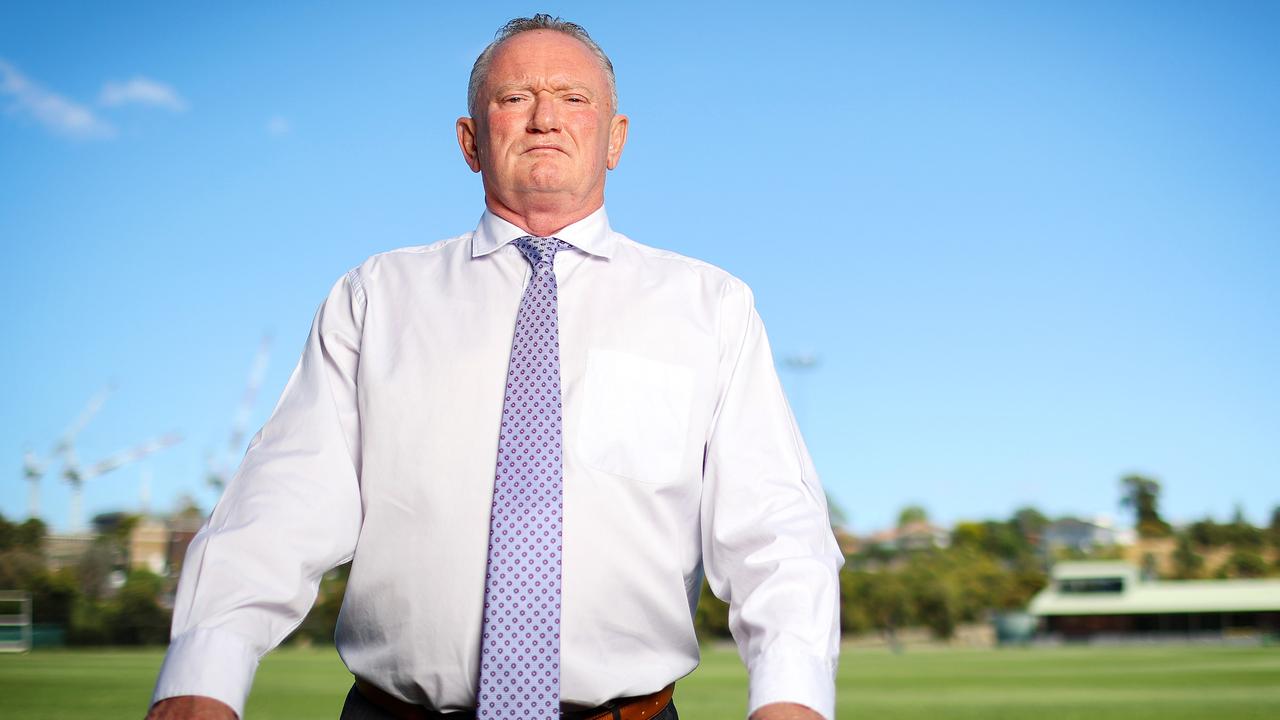
League chief executive Gillon McLachlan, the AFL’s lead negotiator, told the Herald Sun he would not comment.
In his affidavit, Dank said the conspiracy against him began in May 2012 when customs officials confiscated his mobile phone after a trip to Qatar “on the spurious grounds that they were looking for pornography”.
“Customs downloaded everything from my phone. There was no pornography (but) to the best of my memory, there were nearly 7000 text messages,” Dank said.
Nine days later, Dank was hauled in for secret questioning by federal government criminal investigators and grilled “for about seven hours”.
“It was a compulsory hearing, where I was not only compelled to attend, but also not permitted by law, to discuss,” he said.
“Suffice to say, when coupled with customs confiscating my phone … I believed I was being set up.”
Dank says just one of the 7000 SMS messages on his phone referred to “Thymosin Beta-4” (unrelated to Essendon) but alleges the texts were later manipulated by investigators from the Australian Sports Anti-Doping Authority.
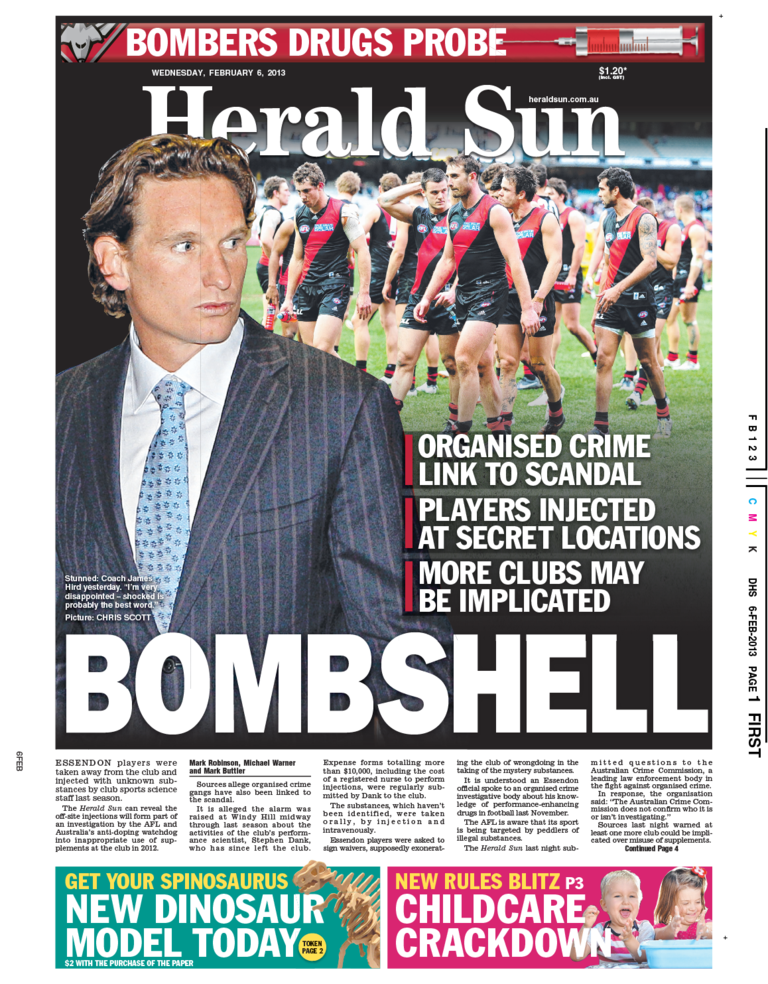
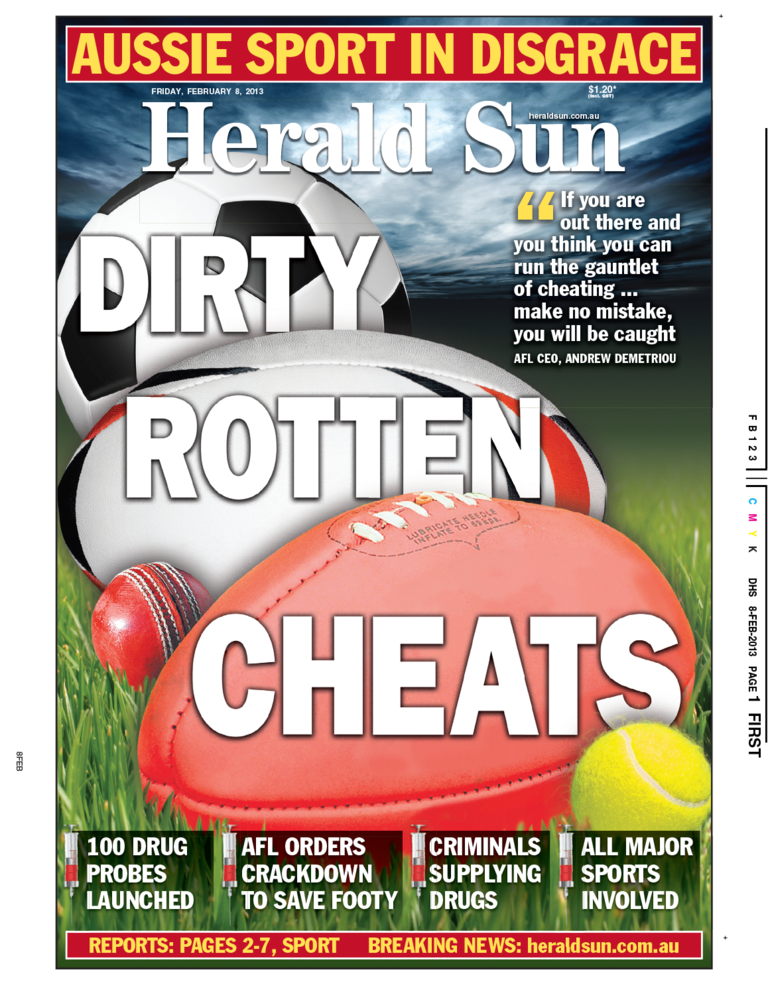
No positive drug tests were ever registered by Essendon players, who were initially cleared of doping by an AFL tribunal, before the Court of Arbitration for Sport overturned the decision in January 2016 on appeal by the World Anti-Doping Agency.
“The AFL Anti-Doping Tribunal found me not guilty of administering or attempting to administer Thymosin Beta-4 to various Essendon players, and ruled that I had not assisted, nor encouraged, nor aided, nor abetted nor covered up administration of the peptide,” Dank said.
“In my view, AFL deputy CEO Gill McLachlan, ASADA CEO Ben McDevitt and ASADA head investigator Aaron Walker knew, or should have known, that they literally had no evidence of wrongdoing against me at Essendon …”
Dank said the AFL’s 34-page charge sheet against Essendon coach James Hird, assistant coach Mark Thompson, footy manager Danny Corcoran and club doctor Bruce Reid “smashed the players’ confidentiality rights” and “contained scores of misrepresentations and “arguably lies”.
“I never took possession of Thymosin Beta-4 during the period under review at Essendon,” he said in the signed affidavit.
Essendon players signed consent forms in 2012 to be administered with ‘Thymosin’, which Dank and lawyers for the Bombers later said was the immunity booster Thymomodulin - not Thymosin Beta-4.
And despite former ASADA boss Ben McDevitt telling ABC radio in 2016 “there were over 100 text messages that unveiled a plan to source Thymosin Beta-4 for the purpose of doping the Essendon team”, Dank declared that “there wasn’t a single text to that effect”.
In another “unforgivable act”, Dank claimed an ASADA investigator told the Essendon players during their formal interviews that an associate had injected them, “at my request, with an unknown substance sourced over the counter in Mexico”.
“(The investigator) turned the players against me when he told the players that the substance could cause birth defects in their children.
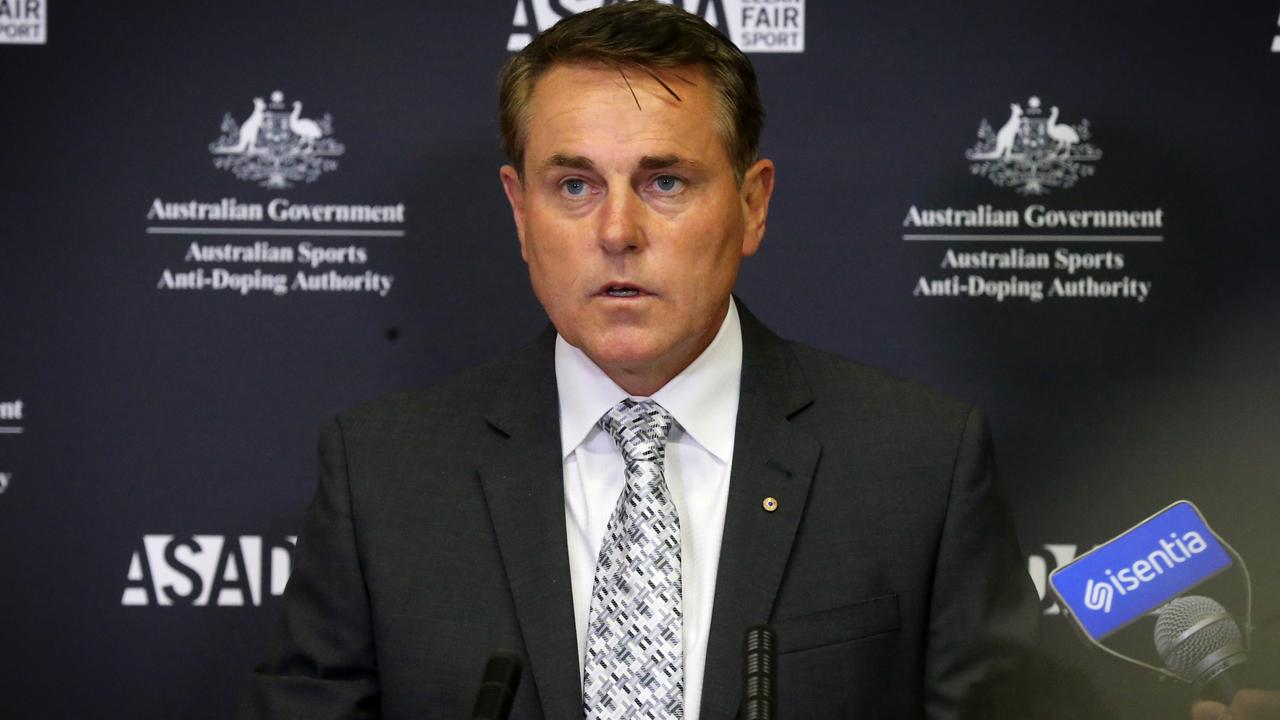
“(He) lied in claiming the substance was bought in Mexico. The substance called Amino Lite was bought in El Paso, which is in the United States of America.
“It was incomprehensible and unconscionable for (the investigator) to have caused such fear amongst the players and their wives.”
During another interview with key witness Nima Alavi from the Como Compounding Pharmacy, Dank claimed that ASADA “implied that I broke into Mr Alavi’s premises during the night and forged documents.
“As a result of those lies, WADA’s lawyer and the presiding CAS ‘judge’ metaphorically speaking referred to me as a bank robber during the hearing …
“The extent of the phony ASADA/AFL injection campaign is best illustrated by the public statements by then AFL chief executive Andrew Demetriou … McLachlan, former WADA president John Fahey and then … Mr McDevitt.
“Mr Demetriou estimated that the players received 10,000-plus injections; Mr McLachlan suggested 4000-plus injections; Mr Fahey said 3000-plus and Mr McDevitt suggested hundreds if not thousands.”
Dank’s affidavit was filed as part of a Freedom of Information dispute in the AAT led by former Australian Test cricketer and economist Bruce Francis.
Francis is seeking the release of key documents presented to the independent Anti-Doping Rule Violation Panel in 2014 as part of ASADA’s pursuit of the Essendon 34.
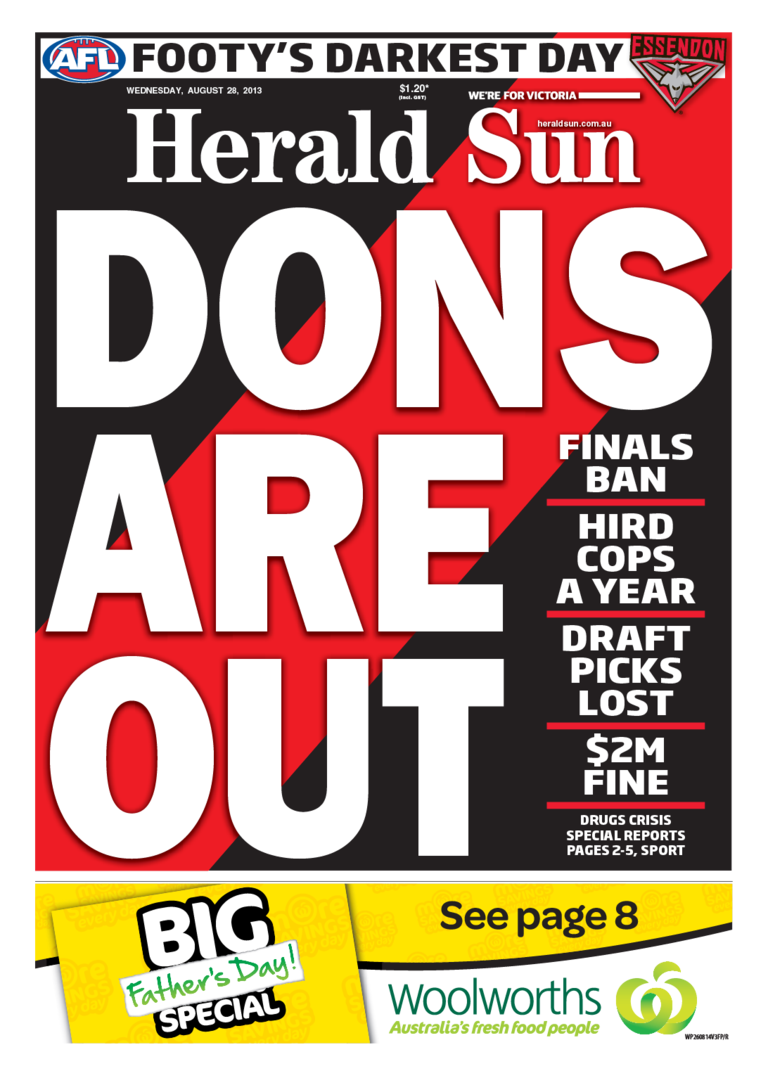
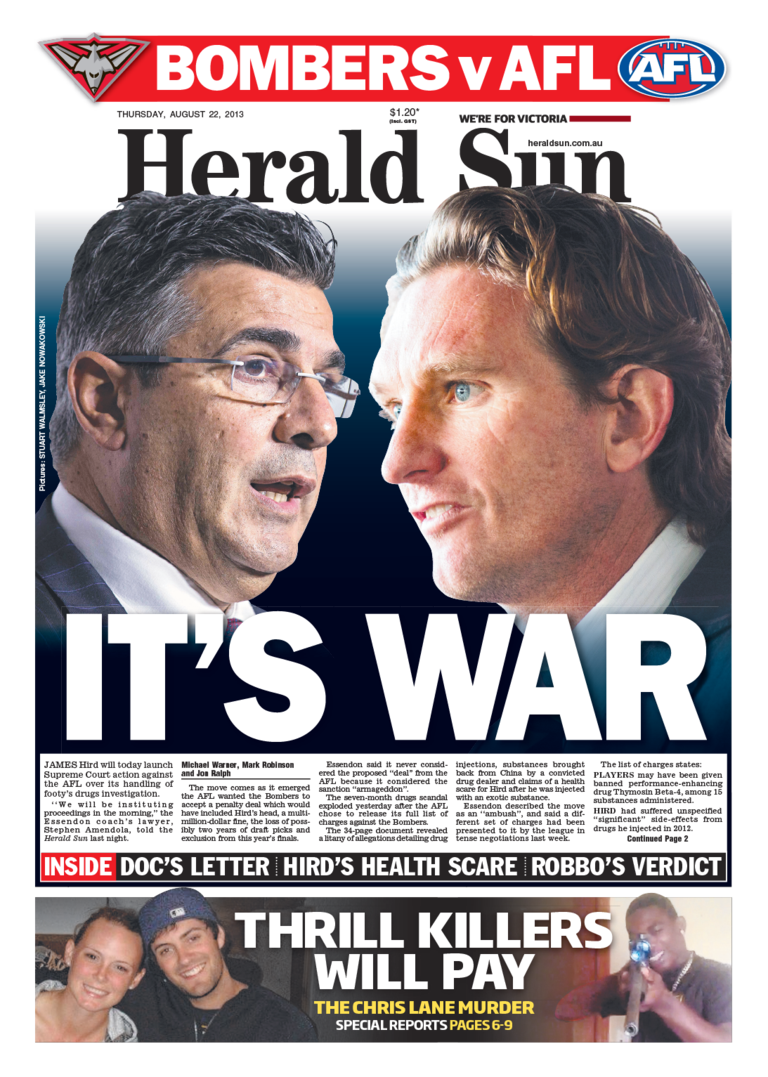
“It is in the players’, the public’s and my interests, to release the documents that will reveal the truth about the case ASADA made to the ADRVP that it was possible 34 players were administered Thymosin Beta-4,” Dank said.
Dank worked at the AFL-controlled Gold Coast Suns before his time at Essendon, supplied substances to Geelong in its 2009 premiership season (the calf’s blood extract Actovegin, which is legal, from a company in Ukraine) and was employed by Melbourne when the drugs scandal broke on February 5, 2013.
His affidavit refers to a 2019 Herald Sun report which revealed ASADA’s “Check Your Substances” website — which athletes and coaches are encouraged to inspect prior to using supplements — did not flag Thymosin Beta-4 as banned until the afternoon of February 4, 2013.
The status update came on the same day the AFL called Essendon chairman David Evans about a secret investigation into the club’s supplements program, prompting the Bombers to “self-report” to the league.
“The evidence of a stitch-up is compelling,” Melbourne scientist Bob O’Dea said at the time.
In a 2019 poll of Herald Sun readers, 81 per cent agreed there should have been a royal commission into the handling of the Essendon doping scandal.


